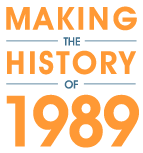Primary Sources
Browse Items: Warsaw Pact
The White House evaluates Soviet Intelligence Capabilities
In the final months of his presidency, shortly before the official dissolution of the Soviet Union, George H. W. Bush instructed the leaders of the US intelligence community to completely reevaluate their raison d'être. Most American intelligence agencies, he pointed out, were conceived in the attitudes and priorities of the Cold War. Therefore, at Cold War's end, he argued, they were….
Europe as a Common Home
After gaining the position of General Secretary of the Communist Party, Mikhail Gorbachev set the Soviet Union on the path of reform with perestroika (restructuring) and glasnost' (openness). He had followed his domestic changes with a general arms reduction throughout Eastern Europe in 1988, extending the reach of his reforms. On 6 July 1989, in a speech made in front of the Parliamentary….
Prime Minister Thatcher addresses the Polish Government
On November 3, 1988, Margaret Thatcher became the first British Prime Minister to make an official visit to Poland. In her toast given at a state diner in the Radziwill Palace in Warsaw, Thatcher highlighted the long historical relationship between Poland and the United Kingdom, especially the cooperation between the two powers during the Second World War. Along with offers of assistance and….
Hungary's Prime Minister discusses the Future
As part of a public demonstration of support for the newly-elected governments in Eastern Europe, the United Kingdom's Prime Minister, Margaret Thatcher, traveled throughout the region in September 1990. Not only did this provide her an opportunity to discuss important matters for Britain's foreign policy but also she could use the attention she brought with Western journalists to allow the new….
NATO Statement on Achieving Stability in Europe
As the Cold War wound down, NATO’s mission underwent a gradual shift from one of insuring the security of member nations through the deterrence of military aggression to one of fostering the integration of Eastern European countries into a new world order. Earlier, in 1967, following a series of statements the previous year from France, West Germany, the US, and the Soviet Union calling for a….
NATO Speech on the Establishment of German Unity
With the fall of the Berlin Wall in November 1989, the prospect of a powerful reunited Germany worried nations in both the Eastern and Western blocs. Soviet officials suggested in repeated messages to the US that the four allies empowered to govern Germany at the conclusion of World War II—Britain, France, the US, and the Soviet Union—meet in order to relinquish their occupation rights and….
NATO Statement on Its Role in Reshaping East-West Relations
As the Cold War wound down, NATO’s mission underwent a gradual shift from one of insuring the security of member nations through the deterrence of military aggression to one of fostering the integration of Eastern European countries into a new world order. At the fortieth anniversary NATO summit held in Brussels at the end of May 1989, the heads of the member states issued a declaration that….
President Bush Comments on the Relaxation of East German Border Controls
Soon after President George H. W. Bush learned the news that the Berlin Wall had opened allowing East Germans to crossover into West Berlin, his press secretary convened an impromptu press conference in the Oval Office. Bush’s wary responses to reporters’ questions, included in the excerpt below, left an impression that he was less than moved by the historic event. The Washington….
